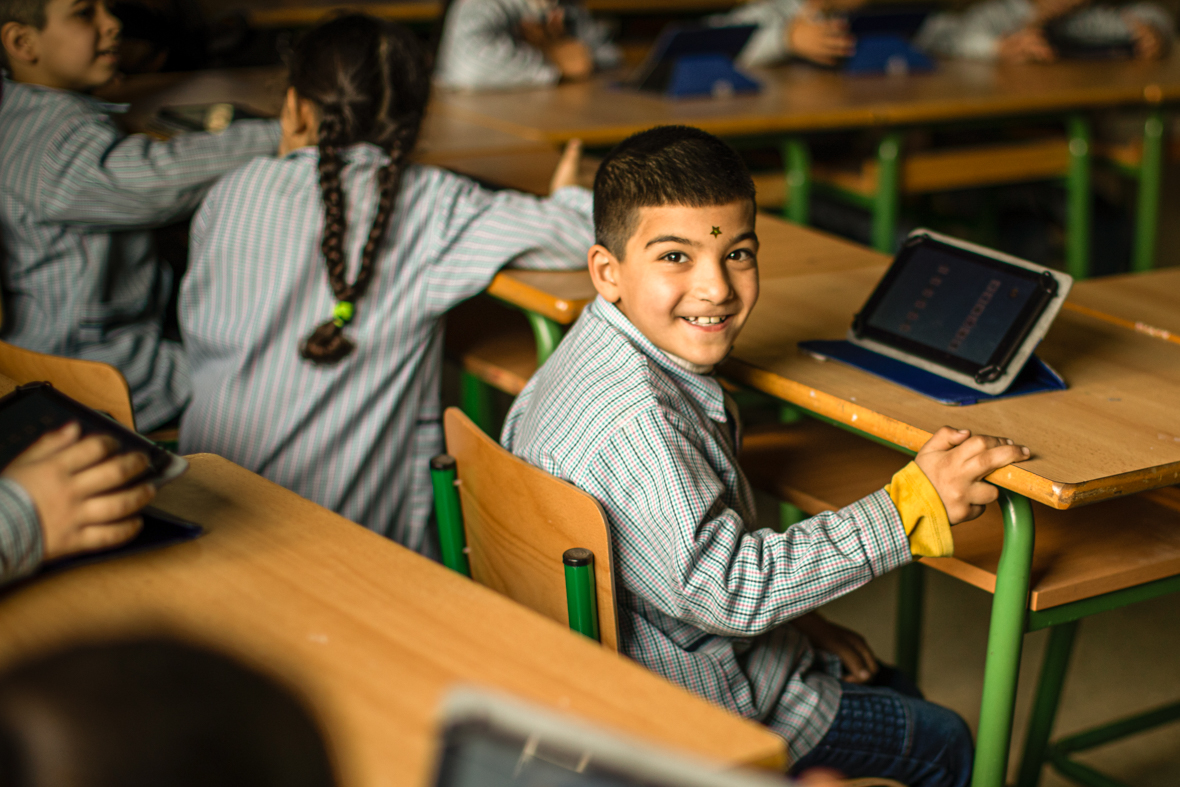
Education in emergencies: world leaders told how to help 65 million children
Children in conflicts, Education funding, Education in emergencies
World leaders will be asked to consider a plan to tackle the lack of education action and funding for 65 million children caught up in conflicts and emergencies.
With heads of government, education ministers and international organisations gathering at a summit in Norway next month, four major recommendations have been devised to meet the challenge.
The UK-based think tank Overseas Development Institute warns that millions of children are missing out on school, dropping out or receiving poor-quality education because of wars and conflicts, natural disasters including earthquakes and floods, and public health emergencies such as Ebola.
In a paper to be presented to the Oslo Summit on Education for Development on July 6 and 7, it recommends that:
- A “champions group” – including donor countries, crisis-affected states and humanitarian groups – is set up to work together for at least a year to strengthen global commitment, develop a detailed plan and raise the necessary resources
- Countries must agree on a unified framework for action and accountability
- A Common Platform for Education in Emergencies and Protracted Crises should address issues such as data collection, coherent planning and the capacity and number of partner organisations
- The finance gap for education in crises must be addressed urgently – followed by the creation of a dedicated fund or new modes of financing
It estimates that an extra $4.8 billion per year – or $74 per child – would begin to close the gap in funding.
The paper – Education in Emergencies and Protracted Crises – was released today as A World at School is mobilising massive public support for a united plea to leaders who will be in Oslo.
Our supporters have been asked to send a tweet to their national leaders, government ministers and NGOs. This will back the amazing support of more than SIX MILLION people who have signed the #UpForSchool Petition, which demands that the international community keeps its promise to get every child into school, without fear of danger or discrimination.
Ben Hewitt, A World at School’s Campaigns Director, said: “World leaders will gather in Oslo and will have an opportunity to publicly commit to the creation of a Global Humanitarian Fund and Platform for Education in Emergencies to guarantee that millions of children affected by war and natural disasters can have a safe place to play and continue learning.
“These leaders have the power to change the lives of children who’ve already survived some of the toughest childhoods imaginable. But without public noise, some leaders may forget these children – or delay it for so long it loses any meaning.”
On A World at School’s Facebook page, hundreds of people have also been leaving messages for those attending the Oslo summit.
Manex Dachi from Nigeria wrote: “Every child deserves to be educated properly as a bedrock for growth and development all over the world. World leaders should stand up for this clarion call, speak out and assist those in need of child education.”
Lyn De Salle of the United States wrote: “Give our children in war-torn countries and struggling through natural disasters the chance to achieve greatness through education. Give our children a future.”
Jean Blanqui Kabongo from the Democratic Republic of Congo said: “Children in emergency have the right to education. Please let’s give them the chance to escape being recruited as child soldiers or geting in an early marriage. Access to education in emergencies is not a privilege but a right.”
The Oslo summit aims to mobilise a strong and renewed political commitment for global education, focusing on four areas – investments in education, girls’ education, education in emergencies and quality of learning.
The ODI report on education in emergencies outlines the consequences for children around the world. It says conflicts and other crises causes the destruction of infrastructure, disruption to education systems, health concerns and delayed development for children, risk of early marriage and pregnancy, recruitment into armed forces and groups, and child labour exploitation.
Analysis also revealed:
- About 37 million primary and lower secondary-age children are out of school in crisis-affected countries – 30% of all those out of school globally in these age groups
- At least 14 million refugee and internally displaced children aged three to 15 in affected countries – only half go to primary school and one in four to lower secondary
- Girls are disproportionately affected, especially by conflict
- More than 90% of children with disabilities in developing countries are not attending school – and this figure will grow in crises
The report gave three specific, recent examples of the impact of conflicts and prolonged crises on education.
Nepal was struck by a devastating earthquake in April, followed by severe aftershocks. More than 36,000 classrooms were destroyed and 17,000 classrooms damaged, disrupting the education of more than one million children.
In 2014-15 Ebola wreaked havoc on the education systems in Guinea, Sierra Leone and Liberia. It impacted 8.5 million children and young people under 20. Schools in the three countries remained closed for more than seven months.
In South Sudan the ongoing conflict is causing massive disruption to an education system that previously only had attendance of 43% for children and adolescents. At least 1188 schools are in the affected region, with 95 occupied by military forces or displaced people. Since December 2013 more than 9000 children are known to have been recruited into armed forces.
The ODI report was commissioned by the Norwegian Ministry of Foreign Affairs, which is organising the Oslo summit.
You can make your voice heard by world leaders now by signing the #UpForSchool Petition.
More news

